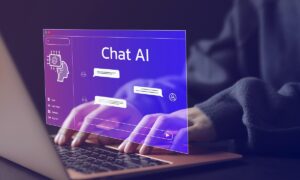Welcome to the fascinating world where reality meets imagination in a seamless blend, blurring the lines of what is real and what is not. Gone are the days when actors were confined to flesh and blood; now, we enter the era of virtual actors brought to life by artificial intelligence (AI). Artificial intelligence (AI) has turned these digital beings into the stars of the show, captivating audiences worldwide with mesmerizing performances in movies and dominating our gaming screens with mind-boggling avatars. In this blog post, we will delve into the extraordinary realm of virtual actors created by AI – an innovation that challenges our perception of reality and leaves us spellbound with its limitless possibilities. Get ready to be enthralled as we uncover how AI has revolutionized not only entertainment but also our very understanding of human expression and creativity.
Introduction to AI-Generated Actors and Characters
When it comes to creating digital characters, artificial intelligence (AI) is quickly becoming a powerful tool for content creators.
Using AI to generate realistic 3D models and animations of human beings enables the creation of lifelike virtual actors for use in movies, video games, and other forms of digital media.
While the technology is still in its early stages, some major productions already feature AI-generated characters. For example, the upcoming sci-fi film “2036 Origin Unknown” uses AI to create a digital version of actor Kate Mara. Additionally, the popular video game “Fortnite” introduced an AI-generated character called “Reaper,” which players can control.
AI’s evolution promises more lifelike virtual actors in media. Currently, they’re background players, but in the future, they could populate entire movies or games, even creating original characters. Whether amazing or scary, this tech undeniably alters digital content creation and consumption.
Benefits of Using AI to Create Virtual Actors or Characters
In recent years, the use of artificial intelligence (AI) to create virtual actors or characters has become increasingly popular in the entertainment industry. Users or AI systems control virtual actors, which are computer-generated characters. Video games, movies, and television shows often use them to create realistic and believable characters.
There are many benefits to using AI to create virtual actors or characters.
- it allows creators to design any type of character they can imagine.
- Virtual studios can create virtual actors very quickly and cheaply compared to traditional methods of creating characters (such as hiring actors and building sets).
- Users or AI systems can precisely control virtual actors, making them much easier to direct than real-life actors.
- Noting that virtual actors never get exhausted or need breaks, studios can use them for long periods of time without encountering any problems.
The use of AI to create virtual actors or characters is a highly efficient and cost-effective way to create believable and lifelike characters for use in various forms of entertainment.
How AI is Used in Developing Virtual Actors or Characters
AI uses various methods to create virtual actors or characters, computer-generated images representing real individuals or animals in digital media. One technique is motion capture, which records real people’s movements and converts the data into lifelike animations. These animations can depict both existing and fictional characters.
Another method involves the creation of three-dimensional (3D) models of the virtual actors or characters. These models can either be crafted from scratch or generated by scanning real people and objects. After creating the 3D model, developers can manipulate its appearance and movements.
Furthermore, AI facilitates the creation of realistic facial expressions for virtual actors or characters. This involves analyzing photos or videos of real people displaying different expressions and developing algorithms capable of generating similar expressions on the virtual characters’ faces.
The voice of a virtual actor or character can also be produced using AI. Developers record the voice of a real person and then utilize software to manipulate it, making it sound as if it is emanating from the mouth of the 3D model representing the character.
Potential Challenges of AI Generated Actors and Characters
As AI technology advances, its potential in digital acting and character creation grows. AI-generated actors provide realistic performances, but challenges must be considered.
One of the main challenges is the risk of creating overly-stereotypical or predictable characters. As AI algorithms become more sophisticated, they will be able to learn and mimic human behaviors more accurately. However, this could also lead to the creation of characters that are too similar to existing stereotypes or cliches.
AI-generated characters may face a challenge in being perceived as “unnatural” or “robotic” due to their lack of human emotions and expressions. This perception could limit their appeal to audiences and undermine their credibility as fictional characters.
Considering the ethical implications of using AI to create digital actors and characters becomes essential. There exists a risk that AI might be employed to generate performances that could be considered racist, sexist, or offensive in various ways. Moreover, unscrupulous individuals could potentially exploit AI-generated characters for commercial gain or other nefarious purposes. Thus, it becomes imperative to establish strict controls and regulations to govern any AI-generated actor or character.
Examples of Movies that Have Used AI Generated Actors or Characters
As technology continues to evolve, so does the way in which movies are made. In recent years, there have been a number of films that have used AI-generated actors or characters. Here are some examples:
• In the movie “The Social Network” released in 2010, an AI-generated character was introduced as Erica Albright, Mark Zuckerberg’s girlfriend.
• “The Imitation Game” (2014) featured an AI-generated portrayal to bring the character of Alan Turing to life.
• In “Blade Runner 2049” (2017), Rachael’s character was portrayed by an AI-generated creation.
• The formidable character of Thanos in “Avengers: Infinity War” (2018) came to fruition through the implementation of AI-generated technology.
Conclusion
AI-created virtual actors are a fascinating development in the world of entertainment, art, and technology. They serve as a way to combine the emotional power of storytelling with cutting-edge technology and create something truly unique. As we continue to explore this new frontier, it is exciting to see what possibilities await us. We can only imagine what could be created when we blur the lines between reality and fiction using artificial intelligence.

































